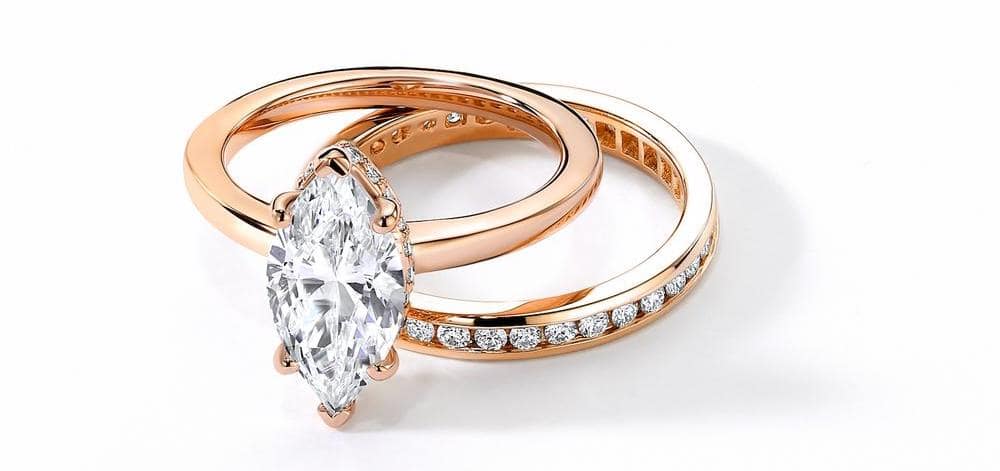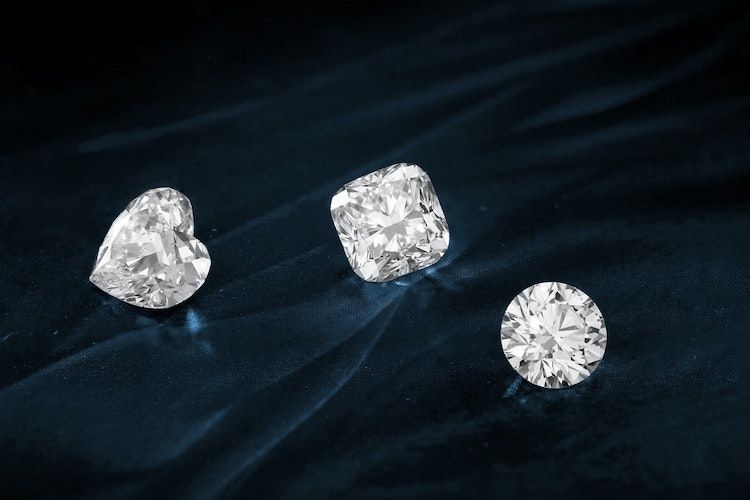Lab-Grown Diamond Rings: How and Where to Buy Them
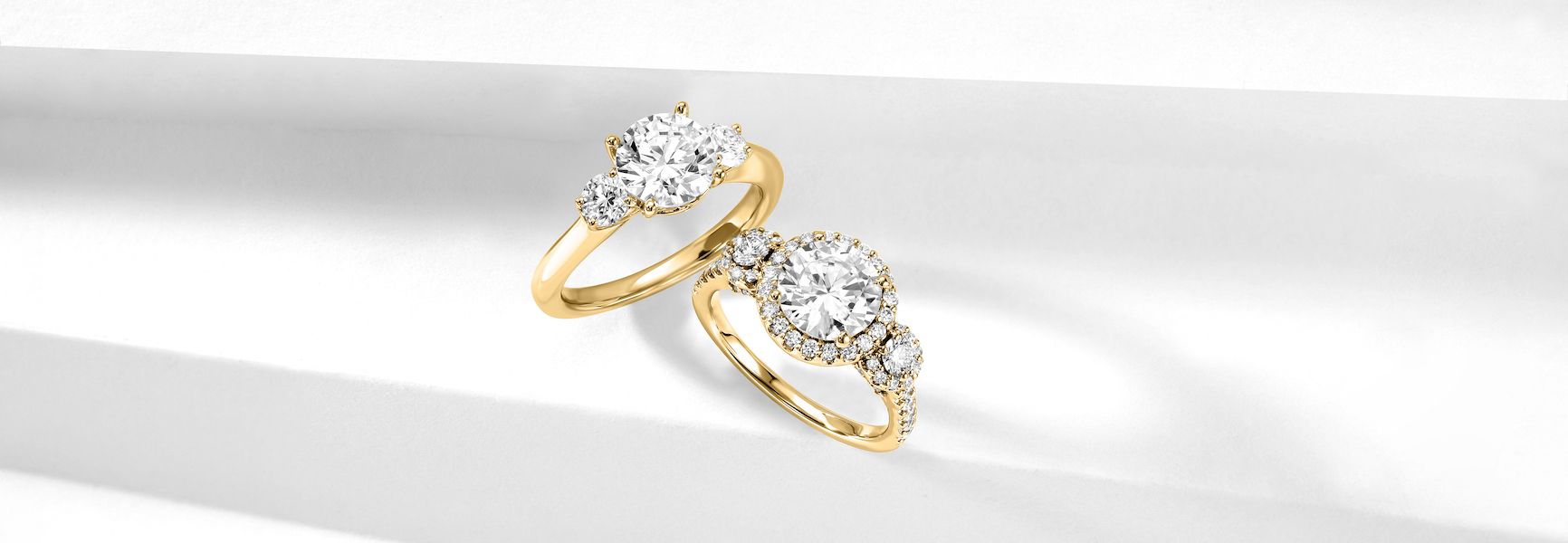
Lab-grown diamond rings are becoming even more popular than natural diamond rings. Keep reading to learn how to buy a lab-grown diamond ring and where to buy them.
What is a lab diamond?
Lab-grown diamonds are manmade diamonds that are chemically and physically identical to natural mined diamonds. You won’t be able to tell the difference between a lab-grown and an earth-grown diamond.
How to choose a lab-grown diamond
Before we go more in-depth on how to choose a quality diamond, it’s important to figure out which diamond shape you want for your ring's center stone. Each diamond shape has a different personality and will influence the overall look of the ring.
Round-cut diamonds are the most common shape. They are also the most sparkly. For these reasons, in addition to the fact that they produce the most rough diamond waste during the cutting process, round-cut diamonds are the most expensive shape.
Fancy shape diamonds are much more affordable. Shapes like the marquise-cut, oval-cut (which is currently trending), and the pear-cut appear bigger than other diamond shapes of the same carat weight due to their large surface area.
If you’re on a tight budget, avoid the Asscher-cut and cushion-cut. These diamonds tend to look smaller than other diamond shapes that are the same carat weight.
The 4 Cs
In order to choose the right lab-grown diamond, you’ll want to get acquainted with the 4 Cs. The 4 Cs (Cut, Color, Clarity, and Carat) are the standard way to judge the beauty and value of a diamond. But don’t worry, if you feel lost along the way, our gemologists are ready to give you a hand.
Cut
Cut is generally considered the most important of the 4 Cs. The better a diamond’s cut quality, the more it will sparkle. For a beautiful, sparkling diamond, choose the best cut quality available – for round-cut diamonds, that’s an Ideal cut, and for fancy shapes, that’s a Very Good cut.
Color
Color determines how little color a diamond reflects. Most shoppers seek diamonds that appear colorless. Diamonds can receive a D grade (completely colorless) all the way down to a Z grade (obvious yellow or brown color).
To save on your diamond, we recommend near-colorless diamonds, like G or H color diamonds. These diamonds will still face up as white. Colorless diamonds are very rare, and therefore much more expensive.
Learn More about Diamond Color
Clarity
Many diamonds have inclusions (tiny imperfections) inside of them - even lab-grown ones. Too many inclusions can affect the beauty and durability of the diamond. Choose a minimum clarity grade of VS2 or better to ensure an eye-clean diamond, and always make sure to view HD images and/or videos of your stone before buying it.
Learn More about Diamond Clarity
Carat
Carat refers to how much a diamond weighs, although it can also correlate with how large it looks. Since lab-grown diamonds are much cheaper than natural diamonds, you can choose a larger diamond for less. The national average for engagement rings is about 1-carat.
Learn More about Diamond Carat Weight
Choosing a Setting
The setting is the piece of metal that secures your diamond to the ring. Here are the most popular settings to choose from.
Solitaire Rings

A solitaire setting features a single diamond set into the band. Simple yet elegant, solitaire diamond rings will never go out of style.
Sidestone Rings

Sidestone rings feature tiny diamonds set in the band of the ring for extra sparkle. This style is perfect for someone who is looking for a classic, gorgeous ring.
Halo Rings
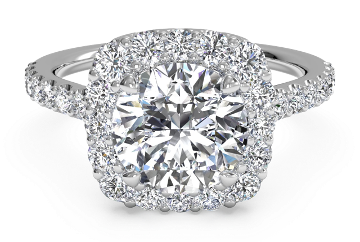
If you want even more bling than a sidestone setting has to offer, choose a halo setting. Halo rings feature tiny diamonds set around your choice of center stone, creating the illusion of a larger stone. Halo settings are one of the most popular styles at Ritani.
Three-Stone Rings
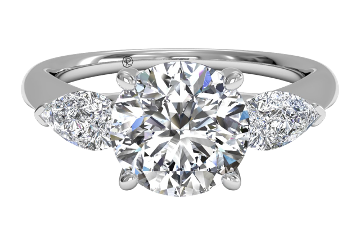
As you may have guessed, three-stone rings feature three diamonds set in the band. A variety of diamond shapes can be used as side stones, such as pear-cut diamonds, princess-cut diamonds, and more.
Vintage-Inspired Rings
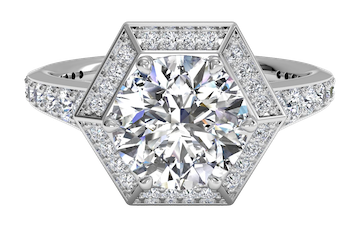
If you are looking for a unique ring, browse vintage-inspired rings. However, they tend to be more expensive than other setting styles since they are very ornate.
Where to buy lab-grown diamond rings
Ritani is one of the best places to buy a lab-grown diamond ring. If you don’t believe us, check out our reviews. With over 50,000 competitively priced lab-grown diamonds, you’re sure to find the right one for your budget. Our non-commissioned gemologists are always ready to help you select the right stone. Once you design your dream ring, you’ll get fast, free shipping and returns.
Design a Lab-Grown Diamond Ring or Choose a Preset Lab-Grown Diamond Ring

